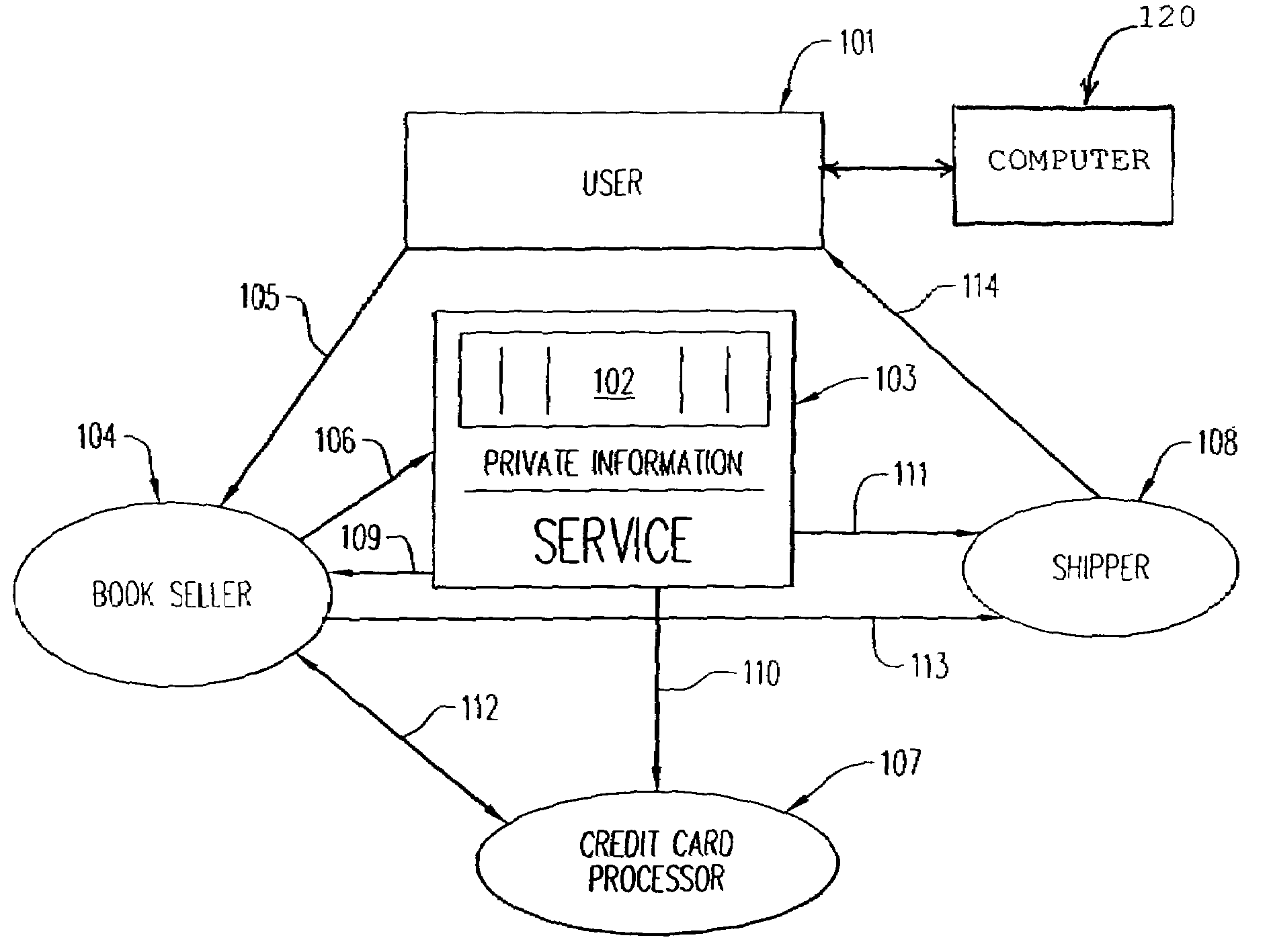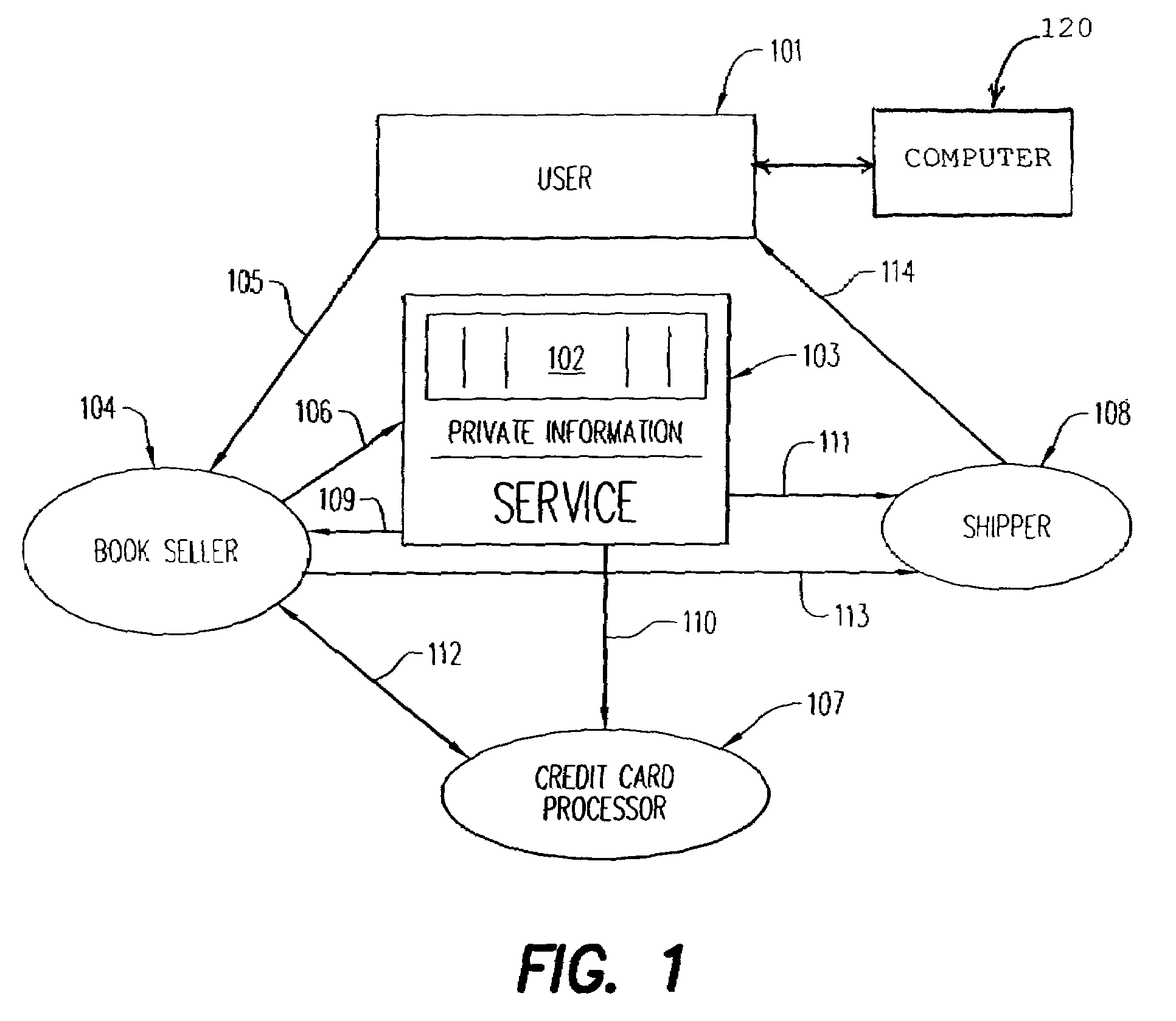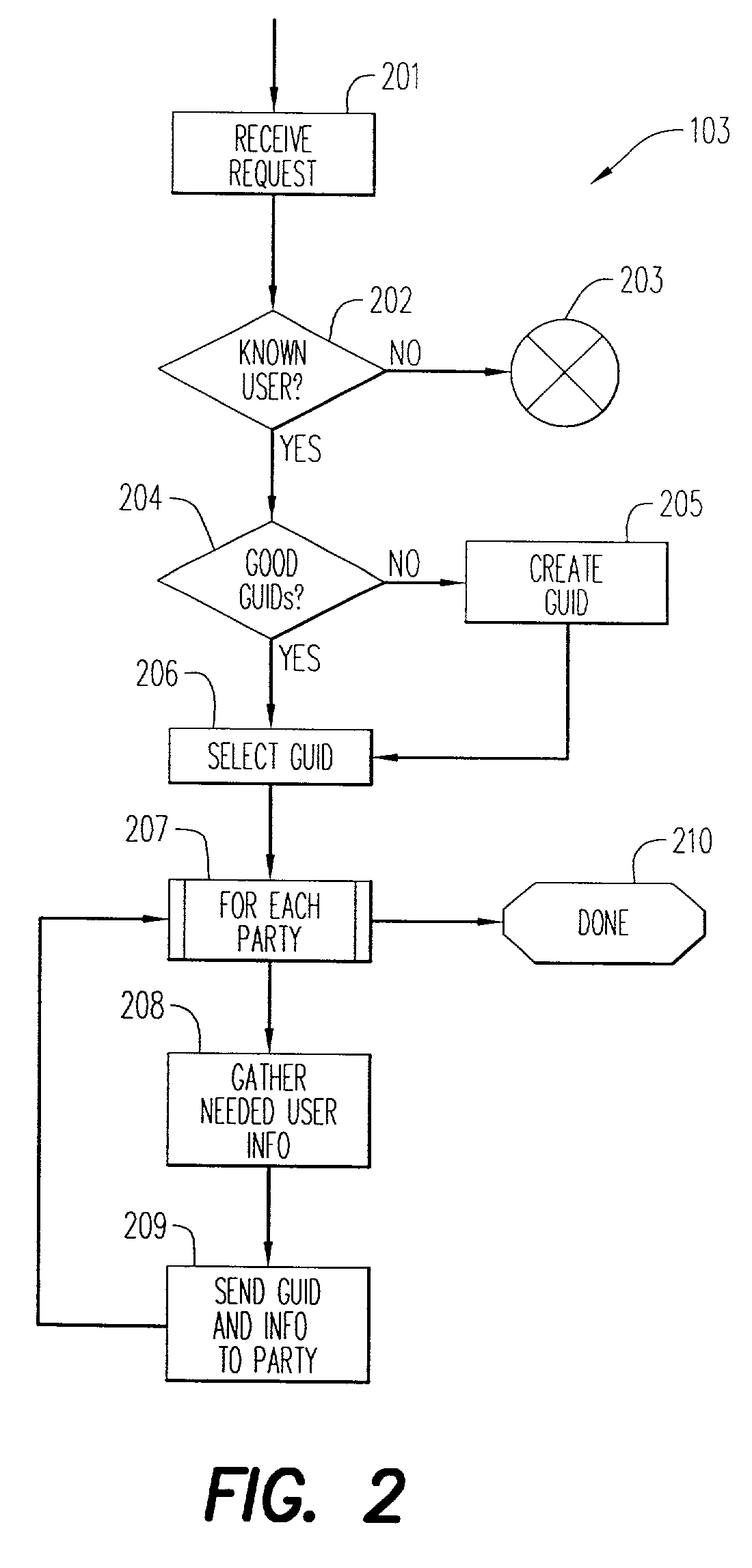[0007]Note that in the current, known
system, where many vendors possess databases containing significant amounts of personal information about a multitude of users and customers, compromise of any one of these vendors exposes all that personal information. An
advantage of the present invention is that, when each vendor possesses only that information that is actually needed for one part of a transaction, the full set of personal information is exposed only if all the vendors involved in some transaction are compromised simultaneously. This drastically reduces the likelihood of the event.
[0008]Vendors typically desire to provide many services in addition to simple selling: discounts, frequent-buyer programs, recommendation services and so on are important value-added services in the modern market. The use of this invention does not prevent vendors from providing these services; it does not “blind” vendors to necessary information about customers, it only relieves them of the burden of receiving private
customer information that they do not in fact need.SUMMARY OF THE INVENTION
[0009]Briefly stated, to obviate the serious inroads that can be made on privacy in online transactions, the present invention resides in the provision of a method for carrying out multi-party transactions in which at least one party or user has information which he considers private, the method comprising: a first determining step, in which it is determined which parties will take part in the transaction; a second determining step, in which it is determined, for each party taking part in the transaction, what information about the user that party requires in order to complete the corresponding part of the transaction; a selecting step, which may occur before or after the determining steps, in which one or more nonces, GUIDs, or other tokens are selected, to represent the user in the course of the transaction; a providing step, in which each party determined in the first determining step is provided with information comprising the corresponding information about the user determined in the second determining step, and one or more of the nonces, GUIDs, or other tokens selected in the selecting step; an execution step, in which the parties to the transaction complete the transaction, using the information about the user that they have been given, and the one or more nonces, GUIDs, or other tokens, to determine and communicate the details of the fulfillment while minimizing the amount of unneeded private information that is transmitted or otherwise exposed.
[0010]There are many possible detailed embodiments of this invention. For example, the construction of unique identifiers and the routing of private information and identifiers to the relevant parties might be carried out (for a fee or other consideration) by an intermediary “private information service”. In another embodiment, these activities would be carried out automatically by the user's own
client software (a
Web browser, plug-in, or other program). In still another embodiment, the user would provide at least some of the necessary information manually, for example by filling out registration forms.
[0011]In some embodiments of this invention, multiple unique identifiers are generated or otherwise selected, and a means is provided for mapping one identifier onto another. For instance, in the example above, the bookseller and the shipper might be given different unique identifiers; say IdA for the bookseller, and IdB for the shipper. A third-party mapping service would be told that IdA corresponds to IdB, the bookseller would be given IdA and contact information for the mapping service, and the shipper would be told that IdB corresponds to a certain shipping address. To cause the books to be shipped, the bookseller would provide to the mapping service data including: the identifier IdA, contact information for the shipper, and other information sufficient for the shipper to find the
package to be shipped. The mapping service would then replace IdA with IdB and provide the result (IdB and the information about the
package) to the shipper. Now even if both the bookseller and the shipper are compromised, an attacker would not be able to correlate the name of the book (known only to the bookseller) and the delivery address (known only to the shipper), since they are stored under different unique identifiers. (IdA at the book seller, IdB at the shipper.)
[0012]In the case that the construction of unique identifiers and the routing of private information is carried out by an intermediary private information service, the identities of some of the parties involved in the transaction might be concealed even from the private information service, in yet another embodiment of this invention. In this case, the initially-contacted party (the book-seller, in the example above) would generate or otherwise select another set of unique identifiers, one for each other party to the transaction (the shipper and credit-card company in the example). It would then provide those identifiers, and a description of the type of information needed by each one, to the private information service; and it would provide the corresponding identifier and the electronic address of the private information service to each other party. To obtain the needed private information about the user (the shipping address for the shipper, the
credit card number for the credit-card provider), each party would contact the private information service anonymously, using the
unique identifier selected by the initially-contacted party to prove their right to obtain the corresponding private information without revealing their identities.
 Login to View More
Login to View More  Login to View More
Login to View More 


